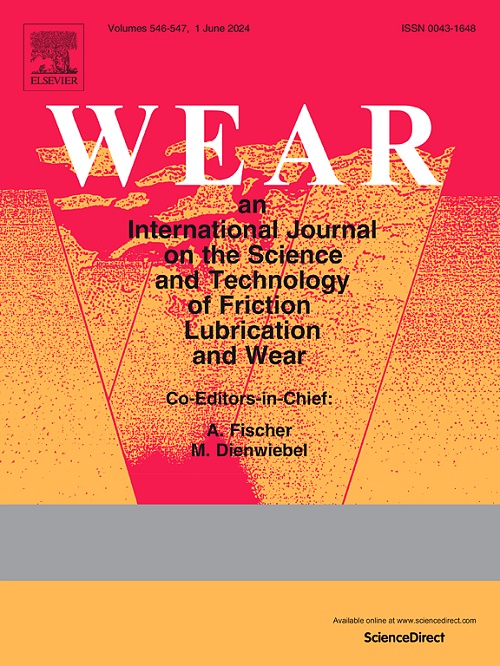A comparative analysis of abrasive wear behaviors and mechanisms of pearlitic and carbide-free bainitic steels for grinding mill liners under varied impact loads
IF 5.3
1区 工程技术
Q1 ENGINEERING, MECHANICAL
引用次数: 0
Abstract
A mill liner is a critical wear-resistant component in mineral crushing equipment, and its main failure mode is impact abrasive wear. This study examined carbide-free bainitic steel and pearlitic steel, which are commonly utilized in commercial liners. The wear behavior and wear mechanism of the two wear-resistant steels under different impact loads were revealed through characterization and testing of their microstructure, mechanical properties, and impact abrasive wear performance. The results indicated that under impact loads of 1, 3, and 5 J, the impact abrasive wear resistance of the carbide-free bainitic steel was superior to that of the pearlitic steel. The wear resistance of the pearlitic steel increased nearly linearly with increasing impact load, whereas the wear resistance of the carbide-free bainitic steel exhibited a nonlinear trend, initially decreasing and then increasing with higher impact loads. Under an impact load of 1 J, both samples primarily exhibited micro-cutting as the main wear mechanism, whereas the pearlitic steel demonstrated additional features such as micro-indentation and spalling. Under impact loads of 3 and 5 J, the main wear mechanisms for both samples were micro-cracking and micro-fatigue caused by abrasive impact. Compared with pearlitic steel, carbide-free bainitic steel demonstrated better resistance to delamination, especially under higher impact loads. This study provides guidance for designing tailored liner materials for different impact loads and lays theoretical foundation for extensive application of bainitic steel liners.
求助全文
约1分钟内获得全文
求助全文
来源期刊

Wear
工程技术-材料科学:综合
CiteScore
8.80
自引率
8.00%
发文量
280
审稿时长
47 days
期刊介绍:
Wear journal is dedicated to the advancement of basic and applied knowledge concerning the nature of wear of materials. Broadly, topics of interest range from development of fundamental understanding of the mechanisms of wear to innovative solutions to practical engineering problems. Authors of experimental studies are expected to comment on the repeatability of the data, and whenever possible, conduct multiple measurements under similar testing conditions. Further, Wear embraces the highest standards of professional ethics, and the detection of matching content, either in written or graphical form, from other publications by the current authors or by others, may result in rejection.
 求助内容:
求助内容: 应助结果提醒方式:
应助结果提醒方式:


